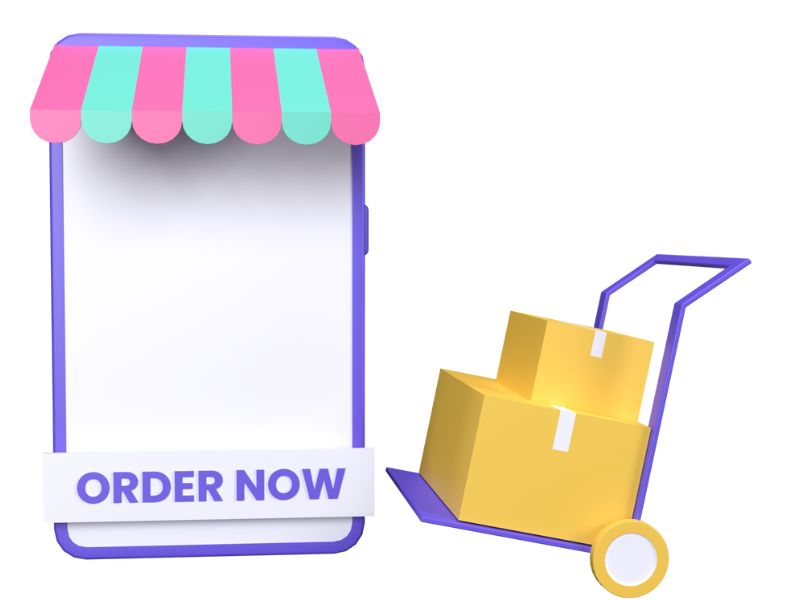Optimize Your E-Commerce Site for SEO: Essential Tips for Online Stores
To attract more customers and increase sales in your online store, it’s important that people can easily find you when they search online and its only possible when you optimize your E-Commerce Site for SEO. Search Engine Optimization (SEO) helps attract more visitors by making your website easier to find in search results. This involves using the right keywords that potential buyers might search for, writing clear and helpful descriptions for your products, and making sure your website is easy to use. Additionally, keeping your content updated and encouraging customer reviews can also make a difference.

Here Are Some Helpful Tips to Optimize Your E-Commerce Site for SEO-
1) Start with Keyword Research
Imagine someone looking for your products online. They might type in terms like “best eco-friendly water bottles” or “affordable running shoes for women.” To find out what your potential customers are searching for, start by brainstorming these terms. Tools like Google Keyword Planner can help you discover which keywords are most popular and how competitive they are. For instance, if you sell outdoor gear, you might find that “durable hiking boots” is a term many people use but isn’t too competitive. This helps you target the right audience without being overwhelmed by too much competition.
2) Optimize Your Website Pages
Once you’ve identified your keywords, it’s time to make sure your website is set up to use them effectively. Think of your website as a store display: you want it to catch the eye of anyone passing by. Each page on your site should have a clear title and description that include your keywords. For example, if you have a page dedicated to running shoes, a good title might be “Top Running Shoes for Comfort and Performance.” A compelling meta description could be “Explore our collection of top-rated running shoes designed for ultimate comfort and performance. Shop now and find your perfect pair!” This helps search engines understand what your pages are about and shows them to the right people.
3) Enhance Product Descriptions
When customers visit your product pages, they want to know exactly what they’re getting. Avoid using generic descriptions from manufacturers. Instead, write detailed, unique descriptions that highlight what makes each product special. For example, if you sell a particular brand of running shoes, describe how they feature extra cushioning for long runs and a breathable design for hot weather. Using your chosen keywords naturally in these descriptions will help your products show up in relevant searches and give potential buyers a clear idea of why they should choose your products.
4) Speed Up Your Website
Nobody likes waiting for a webpage to load, and a slow site can turn potential customers away. To keep your site running smoothly, make sure your images are optimized. Large, high-resolution images can slow down your site, so use tools like TinyPNG to compress them without losing quality. Additionally, enabling caching and minimizing your site’s code can significantly improve loading times. For example, if your site has a lot of images, compressing them and using a Content Delivery Network (CDN) can ensure they load quickly no matter where your customers are.
5) Ensure Mobile-Friendliness
More and more people are shopping on their phones, so it’s crucial that your site works well on mobile devices. Responsive design ensures your website adapts to different screen sizes, so whether someone is browsing on a smartphone or tablet, your site looks great. Test your site’s mobile usability and make sure that all touch elements, like buttons and links, are easy to interact with. For example, a “Buy Now” button should be large enough to tap easily without accidentally hitting the wrong link.
6) Encourage Customer Reviews
Customer reviews not only help future buyers make decisions but also add valuable content to your site. After a purchase, follow up with your customers and ask them to leave a review. For example, you might send an email saying, “Thank you for purchasing from us! We’d love to hear your thoughts on the [Product Name]. Please leave a review to help other customers find what they’re looking for.” Displaying these reviews on your product pages can boost your credibility and help your site rank better in search results.
7) Focus on Local SEO (if applicable)
If you have a physical store or serve a specific local area, focusing on local SEO can help you attract nearby customers. Incorporate local keywords into your site’s content. For example, if you run a bookstore in San Francisco, use phrases like “best bookstore in San Francisco” or “San Francisco bookshop.” Additionally, create and optimize a Google My Business profile to include your store’s address, phone number, and hours of operation. This makes it easier for local customers to find you when they search online.
8) Track and Analyze Performance
To understand how well your SEO efforts are working, use tools like Google Analytics and Google Search Console. These tools let you see where your visitors come from, which pages they like best, and how they interact with your site. For instance, you might discover that a blog post about “choosing the right running shoes” is attracting a lot of traffic. Use this information to see what’s working and make adjustments where needed to improve your site’s performance.
9) Get Backlinks from Quality Websites
Backlinks from reputable sites can boost your site’s authority and improve its search ranking. Reach out to bloggers, industry influencers, or related websites to see if they’d be interested in linking to your site or reviewing your products. For example, if you sell organic skincare products, you might collaborate with a beauty blogger who can review your products and link back to your site. This can help drive traffic to your site and improve your search engine rankings.
SEO is always evolving, so it’s important to stay informed about the latest trends and changes. Follow SEO blogs and attend webinars to learn about new strategies and updates. For instance, if Google announces a new algorithm update, staying up-to-date helps you adjust your SEO strategy accordingly. Keeping an eye on these trends ensures your site remains competitive and continues to attract traffic.
By focusing on these key areas, you can improve how many people visit your site and make their shopping experience better. In the end, good SEO can also help you connect with more customers and sell more products.
Need Help to Optimize Your E-Commerce Site for SEO
We are always ready!

If you are searching for someone who is expert in each of these SEO components, then contact us, our team member will understand your requirement and provide you a detail solution to meet it




